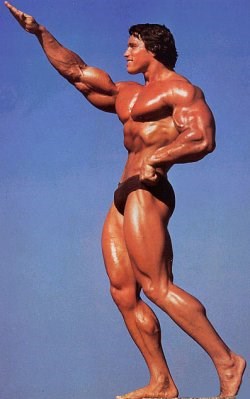NEWS RELEASE
AMERICAN ACADEMY OF ORTHOPAEDIC SURGEONS
************************* Governor of California breaks leg while standing Orthopaedic surgeon says ski bindings could be at fault
ROSEMONT, Illinois - Governor Arnold Schwarzenegger broke his femur, the longest bone in the body, just two days before Christmas.
According to news reports, the governor was standing just prior to the bone breaking.
Noah Finkel, MD, orthopaedic surgeon and spokesperson for the American Academy of Orthopaedic Surgeons (AAOS), points out that simply standing with your skis on can be quite hazardous.
"Your feet are locked in the bindings and without the right movement, the bindings will not let go," Dr. Finkel said.
"The skis are like propellers, causing your leg to move in a twisting motion," he said.
"This can lead to a bad break like we saw with the Governor." It is because of these types of accidents that the academy launched its program, "Prevent Injuries America."
The academy offers prevention programs for many sports including skiing.
While winter sports are a great form of exercise and fun, injuries from these activities receive a significant amount of attention at hospital emergency rooms, doctors' offices and clinics.
In 2004, the U.S. Consumer Product Safety Commission (CPSC) reported 144,379 injuries from skiing.
Injuries can include sprains and strains, dislocations, fractures and even death. "Playing sports in the cold and snow can take a toll on the body," explained Matthew S. Shapiro, MD, orthopaedic surgeon and secretary of AAOS' board of councilors.
"Keeping in proper physical condition and wearing the appropriate clothing and protective gear are key ways to minimize winter sports-related injuries," Dr. Shapiro said. The academy recommends adults and children follow these simple tips to help prevent ski-related injuries: - Never ski alone. - Keep in shape and condition muscles before partaking in winter activities. Cold muscles, tendons and ligaments are vulnerable to injury, so it is important to warm up thoroughly before skiing. - Know and abide by all rules. - Wear appropriate protective gear, including goggles, helmets, gloves and padding.
- Check to make sure equipment is in good working order and used properly.
- For warmth and protection, wear several layers of light, loose and water- and wind-resistant clothing. Layering allows you to accommodate your body's constantly changing temperature. - Take a lesson (or several) from a qualified instructor, especially in sports like skiing. Beginners should avoid jumping maneuvers.
- When falling, try to fall on your side or buttocks. Roll over naturally, turning your head in the direction of the roll. - Become familiar with the whereabouts of fences, trees, rocks, open water and patches of ice.
- Stay on marked trails and avoid potential avalanche areas, such as steep hillsides with little vegetation.
- Avoid skiing when experiencing pain or exhaustion.
- Take rest breaks and replenish fluids during and after skiing. - Be prepared for emergency situations and have a plan to reach medical personnel to treat injuries.
For additional injury prevention tips and information on winter sports and more, please visit the academy's public and patient education website, Your Orthopaedic Connection, or call the public service line at 800-824-BONES. The American Academy of Orthopaedic Surgeons (AAOS.org), with over 30,000 members, is the premier not-for-profit organization that provides education programs for orthopaedic surgeons, allied health professionals and the public.
The academy's fellows have completed medical school, plus at least five years of specialty study in an accredited residency program, passed a comprehensive oral and written exam, and been certified by the American Board of Orthopaedic Surgery.
Orthopaedic surgeons and the academy are the authoritative sources for patients and the public on musculoskeletal conditions, treatments and related issues.
The Academy is participating in the Bone and Joint Decade (USBJD.org), the global initiative to raise awareness of musculoskeletal health, stimulate research and improve people's quality of life.
*************************
